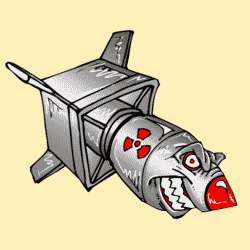 On this day 78 years ago, the Hungarian physicist Leo Szilárd was taking a walk along Southampton Row in Bloomsbury just opposite the British Museum, waiting for a traffic light to change, when he conceived the idea of a nuclear chain reaction. The idea of generating energy by splitting atoms had until then seemed impractical because known methods of splitting atoms by bombardment were very inefficient.
On this day 78 years ago, the Hungarian physicist Leo Szilárd was taking a walk along Southampton Row in Bloomsbury just opposite the British Museum, waiting for a traffic light to change, when he conceived the idea of a nuclear chain reaction. The idea of generating energy by splitting atoms had until then seemed impractical because known methods of splitting atoms by bombardment were very inefficient.
The following year Szilárd filed a British patent application (GB630726) for “Improvements in or relating to the transmutation of chemical elements” involving a neutron chain reaction. His first attempts at creating a nuclear chain reaction were unsuccessful. In 1938 he moved to Columbia University in New York, and when he heard about a successful German fission experiment in 1939 he started experimenting with uranium.
In 1939 Szilárd wrote to the US president explaining that nuclear weapons were possible and that the Germans were actively trying to create them. The letter, which was co-signed by Einstein, led to the creation of the Manhattan Project. The first human-controlled nuclear chain reaction occurred in December 1942. Less than three years later, nuclear bombs were detonated over the Japanese cities of Hiroshima and Nagasaki.